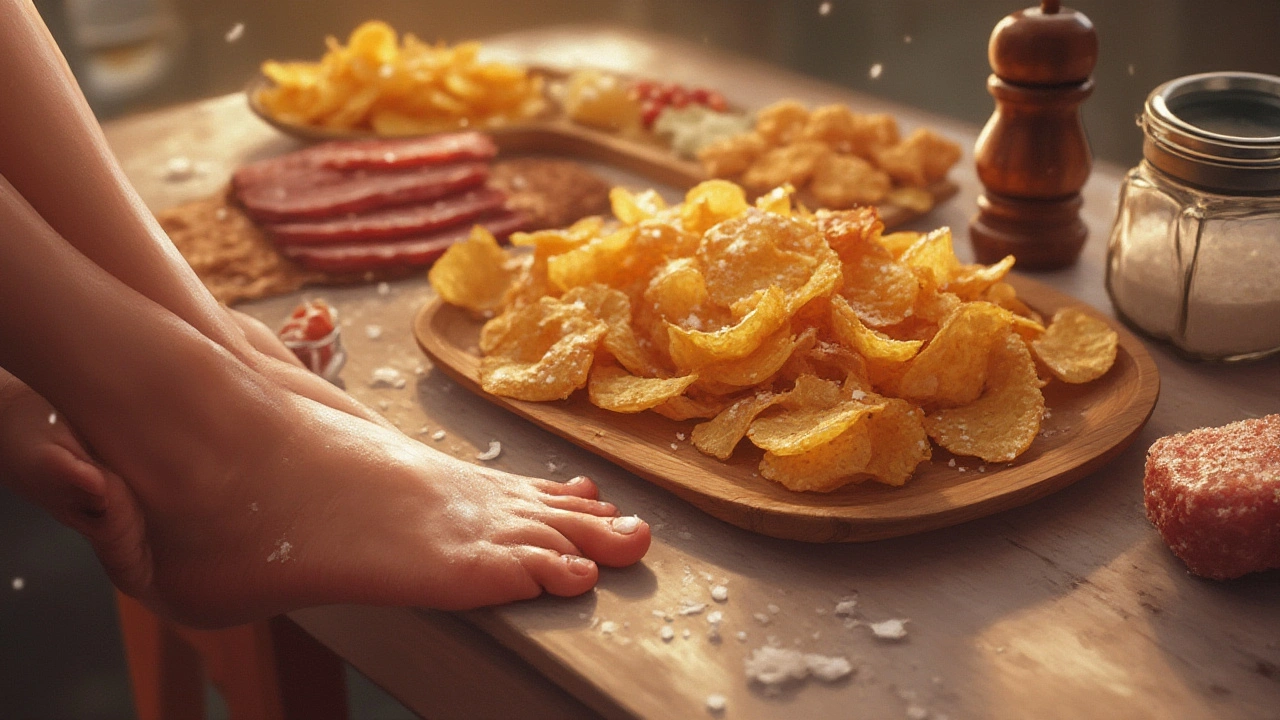Sodium Intake: What You Need to Know
Ever wonder why your doctor keeps talking about "salt" while you’re reaching for the chips? It’s not just about flavor – the amount of sodium you eat each day can tip the balance between good health and trouble. In this guide we’ll break down the numbers, explain the risks, and give you simple tricks to keep your sodium intake in check without sacrificing taste.
How Much Sodium Is Safe?
Most health agencies agree that adults should aim for less than 2,300 milligrams (mg) of sodium a day – that's about one teaspoon of table salt. If you have high blood pressure, heart disease, or kidney issues, the sweet spot drops to 1,500 mg. To picture it, a single slice of pizza can pack 600 mg, and a small bag of pretzels adds another 400 mg. Those numbers add up fast when you’re snacking or eating processed foods.
Why does the limit matter? Sodium holds onto water in your bloodstream, raising blood pressure and forcing your heart to work harder. Over time, that extra strain can lead to heart attacks, strokes, or kidney damage. Cutting just a few hundred milligrams each day can lower blood pressure, improve kidney function, and reduce the odds of a cardiovascular event.
Practical Ways to Cut Sodium Today
Start by reading nutrition labels. Look for the “Sodium” line and compare brands – you’ll often find a low‑sodium version that’s only a fraction of the salt. Swapping regular soy sauce for a reduced‑sodium version can shave off 800 mg from a stir‑fry.
Cook more at home. When you control the ingredients, you decide how much salt goes in. Use herbs, garlic, lemon juice, and spices like paprika or cumin to boost flavor without the sodium hit. A pinch of sea salt is fine, but sprinkle it at the end of cooking so you use less overall.
Watch out for “hidden” salt in breads, cereals, and sauces. A slice of whole‑grain bread can contain 150‑200 mg, and a cup of canned soup might sneak in 800 mg. Choose fresh or frozen vegetables without added sauces, and rinse canned beans or veggies under water to wash away excess salt.
When you eat out, ask for your dish to be prepared “no added salt” or ask for the sauce on the side. Most restaurants will accommodate, and you’ll end up with a meal that tastes just as good, if not better, because the natural flavors shine through.
Finally, track your intake for a week using a free app or a simple notebook. Seeing the numbers in front of you can be a real eye‑opener and helps you spot the sneaky sources you never thought about.
Keeping sodium in check is a habit, not a one‑time fix. By making small swaps, reading labels, and seasoning smarter, you’ll protect your heart, keep blood pressure in range, and still enjoy meals that satisfy your cravings.
Explore our other articles on heart health, dietary tips, and medication guides to round out your wellness plan. The smarter you are about sodium, the easier it is to stay on top of your overall health.
How Salt Triggers Edema and Boosts Heart Risks: Cardiologists Explain

Ever wondered why your ankles puff up after a salty meal? Connect the dots between high-salt diets, swelling (edema), and increased heart risks, with real insights from practicing cardiologists.
